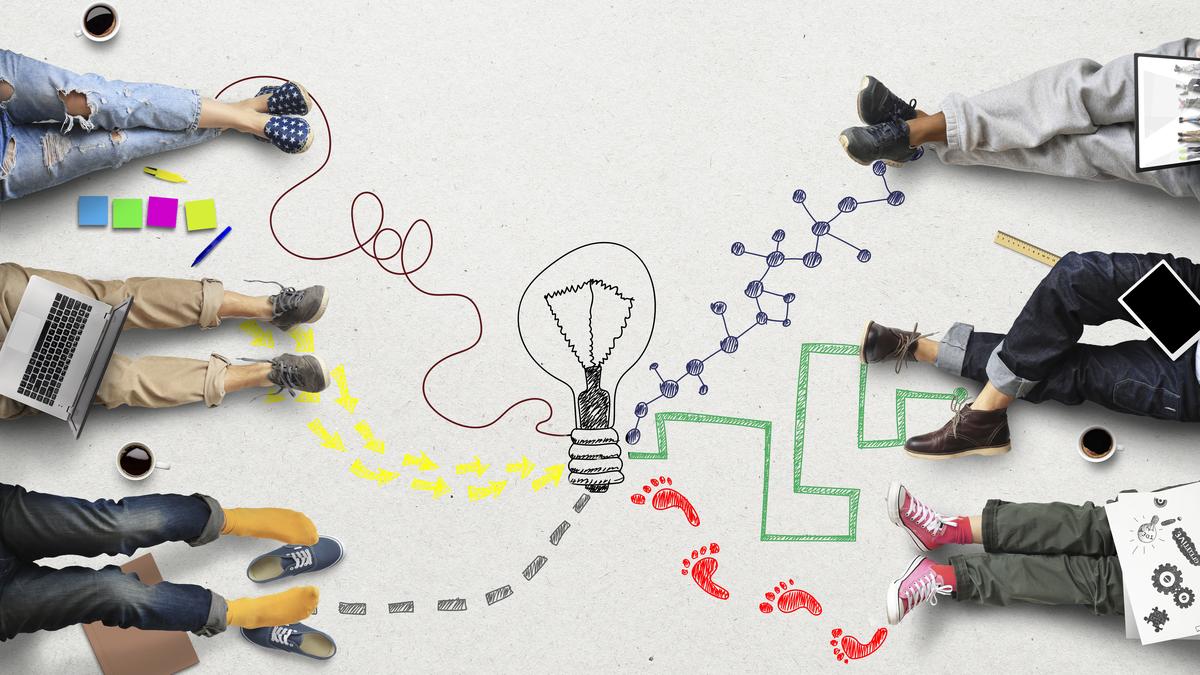
Why early design education is important
The Hindu
Enhance skills for the future with early design education, fostering creativity, problem-solving, empathy, and sustainability-conscious thinking.
Design is not just a discipline but a way of thinking that enhances all disciplines, including technology, engineering, healthcare and urban planning. Early design education provides an essential foundation for students to develop analytical and problem-solving skills and empowers them to tackle complex real-world problems innovatively and ethically, making it a critical part of modern education.
According to the Organisation for Economic Co-operation and Development (OECD), most jobs will require soft skills like creativity and problem-solving by 2030. Design education prepares students to approach challenges from multiple perspectives, analyse problems and iterate solutions. For example, Stanford’s Design Thinking Model, used in early education, teaches students to empathise, define, ideate, prototype, and test, thereby helping them develop a positive attitude and see obstacles as opportunities for innovation.
India’s National Education Policy (NEP) 2020 aligns with this approach by advocating for art and design integration across core subjects like Maths, Science and History. Early design education helps students develop spatial awareness, visualisation skills and multidisciplinary approaches; all of which are essential for careers in Architecture, Technology and Engineering. In countries like Finland, where design is embedded into early education, students outperform their peers globally, excelling in both critical thinking and creativity.
When students learn to design a product, they go beyond studying aesthetics to analyse user needs, environmental impact, functionality and market dynamics. Take, for example, Building Information Modelling (BIM), a tool used in sustainable architecture. When introduced to students at an early stage, it enables them to visualise and optimise energy-efficient solutions, fostering skills in energy-efficient design and environmental impact assessment.
Design education also enhances empathy and emotional intelligence, crucial skills in a world that increasingly values inclusivity and user-centered solutions. Collaborative projects encourage students to communicate effectively, negotiate differing viewpoints, and integrate multiple user needs into cohesive solutions. This human-centred approach has wide applications ranging from healthcare, where empathic design can improve patient care, to technology, where inclusive design enhances accessibility. Notably, empathy in design aligns with a 2020 McKinsey report, which found that companies focusing on user-centred inclusive design achieved 1.5 times more growth than their competitors.
The socio-economic impact of early design education is profound. In India, design is becoming increasingly central to economic development. We can produce a generation of people prepared to tackle urgent societal issues like urbanisation, healthcare accessibility, and environmental sustainability by teaching students to think like designers from an early age and instilling in them a set of “horizontal” skills like visualisation and spatial reasoning. Through exercises like designing models and prototypes, students learn to analyse spatial relationships, material constraints, and environmental factors, which prepares them for careers requiring both analytical and abstract thinking.
Early design education also encourages sustainability-conscious thinking, which helps in addressing global environmental challenges. Students working on sustainability-focused projects learn to apply concepts like the circular economy, waste-reducing designs, enhanced product longevity, and end-of-life disposal. This aligns with the World Economic Forum’s recommendation that design thinking should be a part of environmental education to promote systems thinking and a long-term outlook; key skills to tackle climate change and resource scarcity.

 Run 3 Space | Play Space Running Game
Run 3 Space | Play Space Running Game
 Traffic Jam 3D | Online Racing Game
Traffic Jam 3D | Online Racing Game
 Duck Hunt | Play Old Classic Game
Duck Hunt | Play Old Classic Game

















